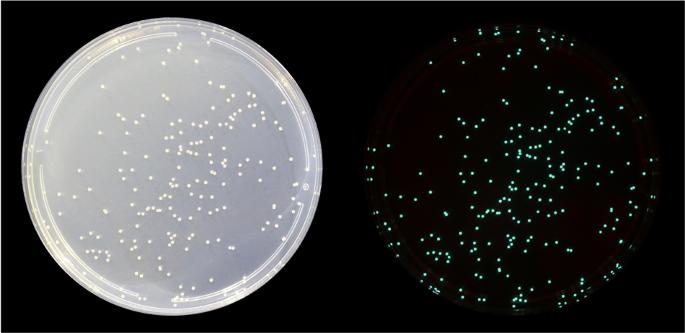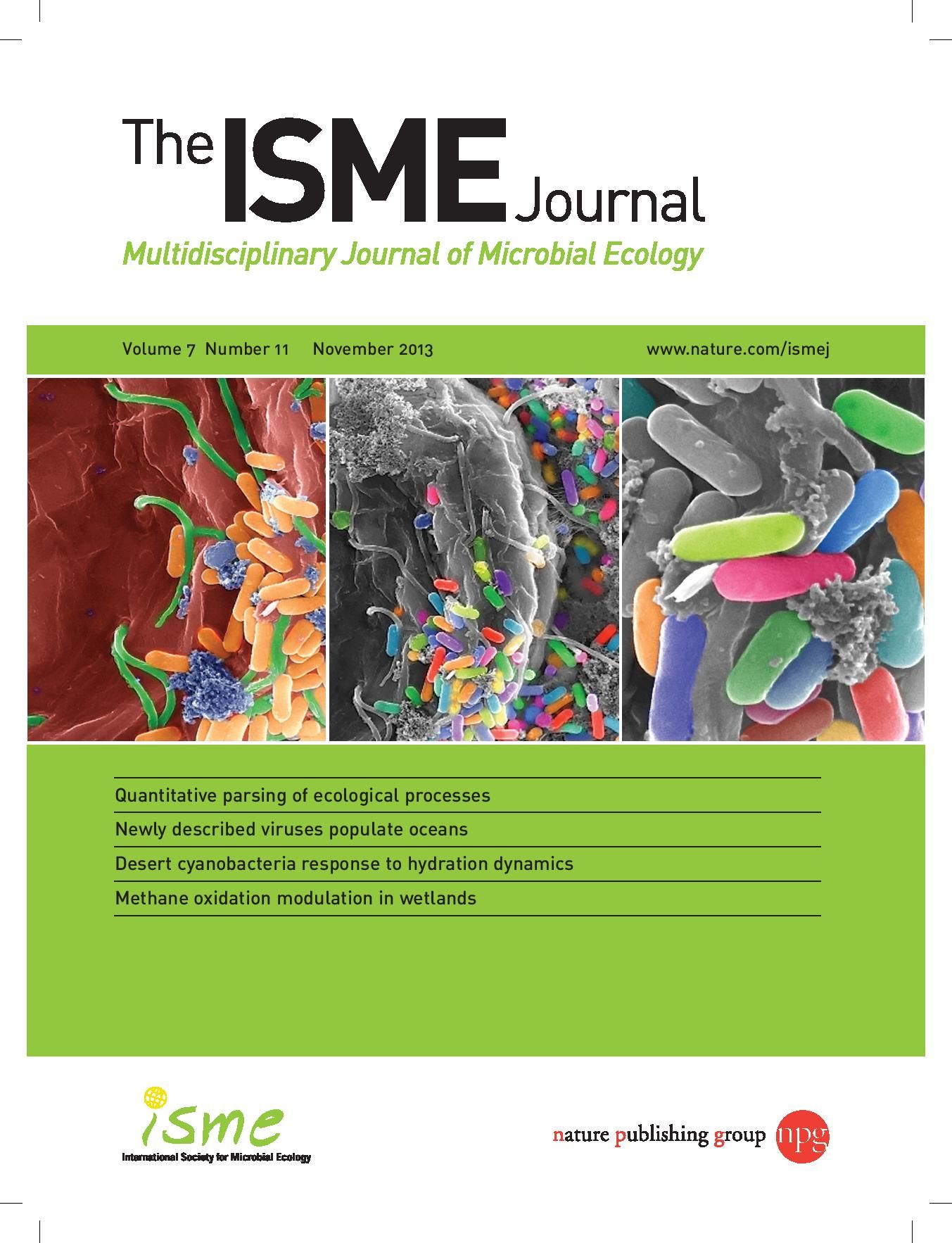生物发光鱼类个体和种群之间共生体群落的菌株水平多样性。
IF 10.8
1区 环境科学与生态学
Q1 ECOLOGY
引用次数: 0
摘要
与其他生物发光鱼类-细菌组合相比,海胆-红心鱼、Siphamia tubifer和Vibrionaceae发光成员mandapamensis光细菌的生物发光共生关系具有高度的特异性。尽管具有高度的特异性,但在相对较小的空间尺度上,已经观察到来自宿主的共生体的遗传多样性模式。我们使用PCR指纹图谱对从菲律宾和日本采样的桶形轮虫宿主内部和之间的亚物种、菌株水平共生体多样性进行了表征和比较。然后,我们对鉴定出的独特共生体基因型进行了全基因组测序,以表征共生体群落和共生体泛基因组的遗传多样性。我们确定单个光器官平均包含六种共生体基因型,但在1-13之间变化。此外,我们发现来自同一地点的宿主之间共享的基因型很少。对独特共生体菌株的系统发育分析表明了特定位置的分支,表明共生体在宿主种群之间存在一些遗传分化。我们还鉴定了不同菌株之间可变的共生体基因,包括luxF,一种负责光生产的lux操纵子成员。我们量化了缺失luxF的两个菌株以及从相同光器官分离的其他菌株的光发射和生长率,并确定缺乏luxF菌株比大多数其他菌株更暗,但生长更快,这表明存在潜在的代谢权衡。这项研究强调了菌株水平多样性在微生物组合中的重要性,并为宿主体内种内共生体群落的潜在遗传结构提供了新的见解。本文章由计算机程序翻译,如有差异,请以英文原文为准。

Strain-level diversity of symbiont communities between individuals and populations of a bioluminescent fish
The bioluminescent symbiosis involving the urchin cardinalfish, Siphamia tubifer, and Photobacterium mandapamensis, a luminous member of the Vibrionaceae, is highly specific compared to other bioluminescent fish-bacteria associations. Despite this high degree of specificity, patterns of genetic diversity have been observed for the symbionts from hosts sampled over relatively small spatial scales. We characterized and compared sub-species, strain-level symbiont diversity within and between S. tubifer hosts sampled from the Philippines and Japan using PCR fingerprinting. We then carried out whole genome sequencing of the unique symbiont genotypes identified to characterize the genetic diversity of the symbiont community and the symbiont pangenome. We determined that an individual light organ contains six symbiont genotypes on average, but varied between 1–13. Additionally, we found that there were few genotypes shared between hosts from the same location. A phylogenetic analysis of the unique symbiont strains indicated location-specific clades, suggesting some genetic differentiation in the symbionts between host populations. We also identified symbiont genes that were variable between strains, including luxF, a member of the lux operon, which is responsible for light production. We quantified the light emission and growth rate of two strains missing luxF along with the other strains isolated from the same light organs and determined that strains lacking luxF were dimmer but grew faster than most of the other strains, suggesting a potential metabolic trade-off. This study highlights the importance of strain-level diversity in microbial associations and provides new insight into the underlying genetic architecture of intraspecific symbiont communities within a host.
求助全文
通过发布文献求助,成功后即可免费获取论文全文。
去求助
来源期刊

ISME Journal
环境科学-生态学
CiteScore
22.10
自引率
2.70%
发文量
171
审稿时长
2.6 months
期刊介绍:
The ISME Journal covers the diverse and integrated areas of microbial ecology. We encourage contributions that represent major advances for the study of microbial ecosystems, communities, and interactions of microorganisms in the environment. Articles in The ISME Journal describe pioneering discoveries of wide appeal that enhance our understanding of functional and mechanistic relationships among microorganisms, their communities, and their habitats.
 求助内容:
求助内容: 应助结果提醒方式:
应助结果提醒方式:


